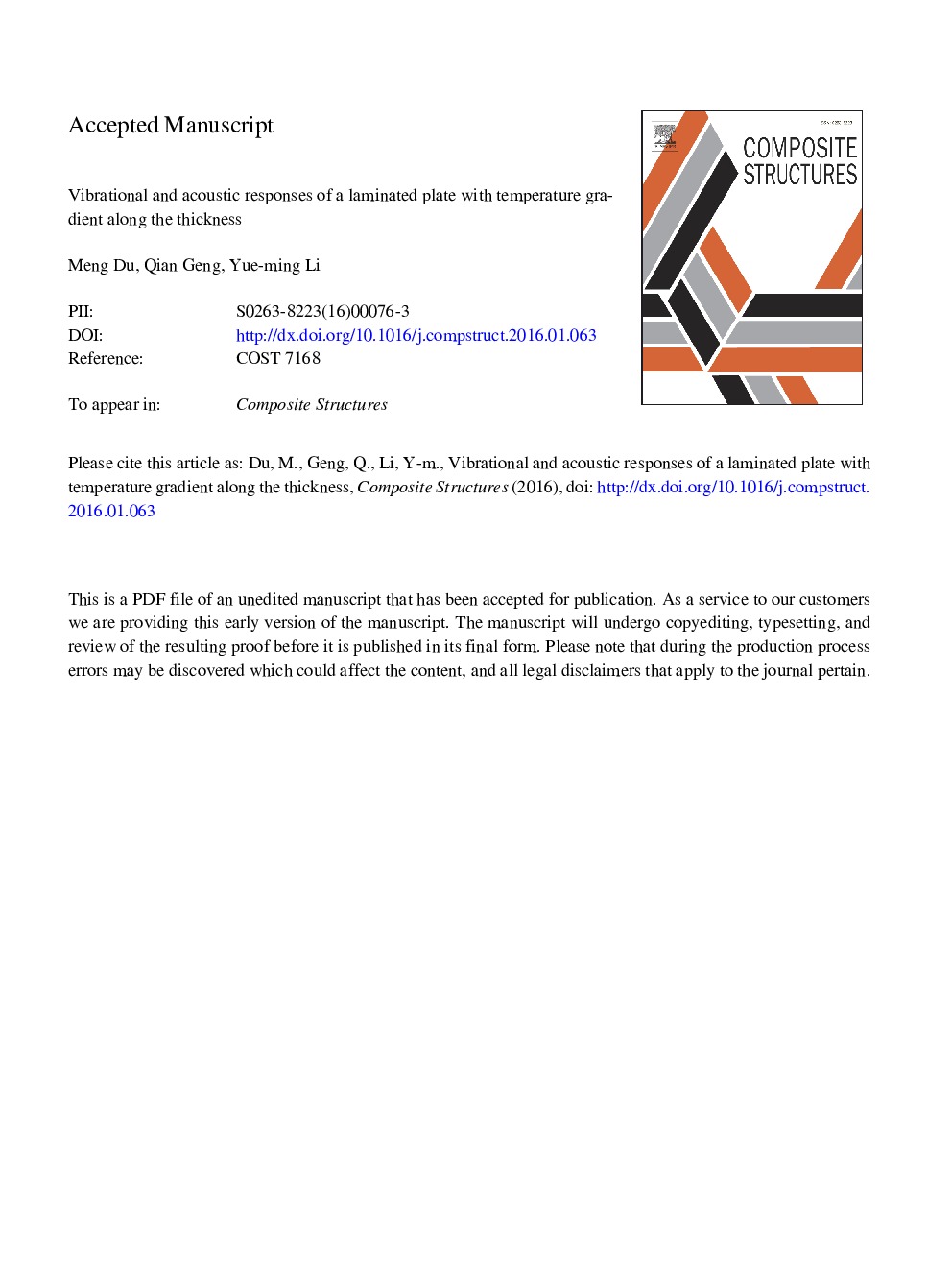| کد مقاله | کد نشریه | سال انتشار | مقاله انگلیسی | نسخه تمام متن |
|---|---|---|---|---|
| 4912401 | 1428550 | 2016 | 48 صفحه PDF | دانلود رایگان |
عنوان انگلیسی مقاله ISI
Vibrational and acoustic responses of a laminated plate with temperature gradient along the thickness
ترجمه فارسی عنوان
پاسخ ارتعاشی و آکوستیک یک ورقه ای با درجه گرادیان در طول ضخامت
دانلود مقاله + سفارش ترجمه
دانلود مقاله ISI انگلیسی
رایگان برای ایرانیان
کلمات کلیدی
صفحات لمینیت، لرزش، پاسخ آکوستیک، شیب درجه حرارت،
ترجمه چکیده
تحلیلی بر روی ویژگی های پویای یک ورقه ورقه ای تحت درجه گرادیان انجام می شود. فرمولاسیون های نظری با نظریه تغییر شکل پذیری برش اول و رابطه جابجایی غیر خطی فون کارمن با توجه به اثر گرادیان دما مشتق شده است. راه حل های نیمه تحلیلی از ارتعاش و پاسخ های صوتی برای شیب درجه حرارت مختلف بدست می آید. صحت روش نظری با مقایسه نتایج تجربی و شبیه سازی عددی نشان داده شده است. کار فعلی به لحاظ تئوری توضیح می دهد که چرا پایین ترین نقطه (وقوع خم شدن) منحنی تجربی فرکانس های رزونانس برای ساختار حرارتی است که از محور افقی حرکت می کند. همچنین به این معنی است که تغییر شکل حرارت اولیه و استرس حرارتی باید با هم در شبیه سازی پاسخ دینامیکی برای ساختار حرارتی در نظر گرفته شوند. نتایج تحقیق نشان می دهد که با افزایش گرادیان دما، فرکانس رزونانس افزایش می یابد، دمای بحرانی بحرانی بحرانی که در آن فرکانس رزونانس به پایین ترین میزان کاهش می یابد و پیام های پاسخ به سمت فرکانس بیشتر حرکت می کنند.
موضوعات مرتبط
مهندسی و علوم پایه
سایر رشته های مهندسی
مهندسی عمران و سازه
چکیده انگلیسی
Analytical study is carried out on the dynamic characteristics of a laminated plate under temperature gradient. Theoretical formulations are derived with the first order shear deformation theory and von Karman nonlinear strain displacement relationship considering the effect of temperature gradient. Semi-analytical solutions of vibration and acoustic responses are obtained for different temperature gradients. The correctness of the theoretical method is demonstrated by comparing with the experimental result and numerical simulation. The present work theoretically explains why the lowest point (buckling occurring) of the experimental curve of resonant frequencies for thermal structure is shifting up away from the horizontal axis. It also means that initial thermal deformation and thermal stress have to be considered together in simulation of the dynamical response for thermal structure. Research results show that with increasing temperature gradients, the resonant frequency increases, the critical mid-plane temperature at which resonant frequency drops to the lowest decreases, and the response peaks move toward higher frequency.
ناشر
Database: Elsevier - ScienceDirect (ساینس دایرکت)
Journal: Composite Structures - Volume 157, 1 December 2016, Pages 483-493
Journal: Composite Structures - Volume 157, 1 December 2016, Pages 483-493
نویسندگان
Meng Du, Qian Geng, Yue-ming Li,
